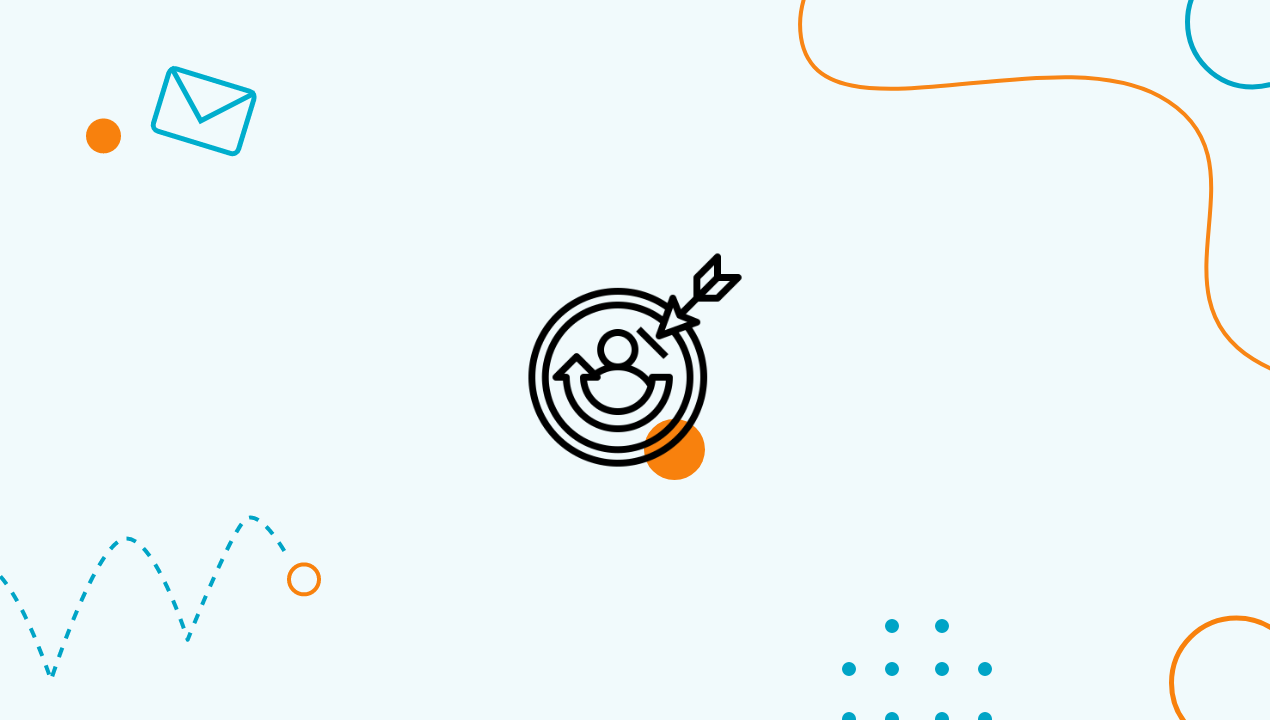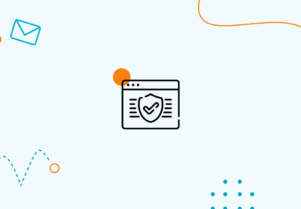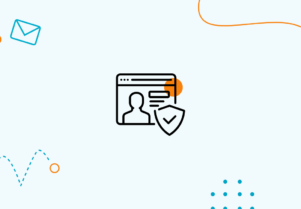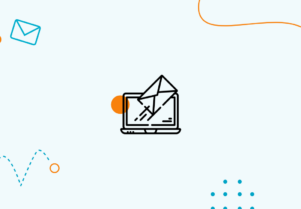What is Email Marketing Retargeting And How Does it Work?
Email retargeting isn’t anything new, but how can you incorporate it into your email campaigns to make a lasting marketing impression on your audience?

Email retargeting can help email marketers boost conversions by a huge 150%. What is it about this process works so well? Email retargeting allows you to reach the right customer, at the right time, with the right information or offer sent in your remarketing emails.
Email retargeting refers to a process of sending personalized email messages to prospects who have already visited your website or otherwise engaged with your brand. This gives you an advantage over traditional email marketing since you have the opportunity to communicate and engage with prospects who have already shown some interest in your brand, products, or services.
Where is email marketing retargeting used?
There are several ways that you can use email retargeting. Some of the most popular options are:
Promoting offers to inactive subscribers with email retargeting
You can use this type of email retargeting when somebody has signed up for your email subscriber lists but does not engage with your content. You can use a retargeting campaign to remind them about your products and services or to find out more about them in order to send them more relevant content in the future.
This can be one of the most effective strategies if you want to remind inactive visitors about the products they browsed or other complementary products. Depending on their previous purchase history, these can be cross-sell emails (selling related products) or an upsell email (selling an add-on to the previously purchased product).

Existing customer promotions of new products and services
Retargeting your existing customers with promotions on services or products that they might be interested in based on their previous activity is a great way to improve sales and get the most from your email list. You can leverage past customer purchases and browsing behavior to get sales of new products or signups to new services off to a strong start.
For example, you can send an email blast to an audience of people who have previously purchased something. Now you have a fresh product you want to get in front of buyers and your email list subscribers.
Simply push out a new campaign to your entire audience. This is one of the most common digital marketing strategies out there and you probably get a bunch of these emails yourself. The conversion probability increases with the level of audience segmentation in your campaigns.
There is little to no extra cost in personalization, and personal recommendations can go a long way. A custom audience will yield better results than mailing your entire email list.
Promoting to high-value subscribers
You can use email retargeting to target any subscribers who have read your emails but not yet clicked on any links, as a more targeted way to promote offers and help with boosting conversions.
Over time, you can turn them into loyal customers if you send highly personalized remarketing emails to this specific segment.
Promote related products and services
If you sell products or services that go well together, this can be an ideal option for promoting to existing buyers or customers. For example, if you run an online furniture store and a customer has purchased an item of your website that you have a full range for, you can email them with more information about the other products that are available in the range.
Sending cart abandonment emails
Shopping cart abandonment can cost businesses up to $18 billion every year. What happens is that a customer logs into your website, decides to purchase a few things and puts them in their cart, then leaves for some unknown reason. Since they originally wanted to purchase, sometimes all it takes is sending an abandoned cart email to remind them to do so.
The great thing about cart abandonment emails is that you have all the information available. If you ask the customer to create an account before shopping (or sign in with Facebook or Google), you can track their online behavior.
Most email tools have an option for automatic abandoned cart emails. It’s simple – you set a certain time frame (e.g. 24 hours) after which a customer has put something in their cart and not purchased it. The email goes out to your potential buyers, giving them a personalized experience while shopping and helping you get better clickthrough rates and conversions.
What are the benefits of email retargeting?
One of the best things about email retargeting is that it is designed to work with customers who are already interested in your brand, products, and services, so the potential benefits are massive. Compared with a regular eCommerce conversion rate of 2-4%, the rate for email marketing conversions could be over 40%, according to Moz.
Statistics show that email retargeting campaigns can help marketers make four times their usual revenue, drive offline action through ads that encourage customers to visit a physical store, get past customers interested in products and services again, and drive traffic to particular pages to improve organic search rank.
Overall, email retargeting is a useful way to reach more customers via multichannel approaches.
Steps to effective email retargeting
To run an effective email targeting campaign, do the following:
Collect customer data
You can use social analytics, analytics data, and other data collected via your CRM to get a better idea of who your customers are and what they usually do on your site.
Segment your audience
Once you have collected your data, it’s important to segment your audience so that you can choose various onsite or email retargeting options depending on the user profile.
For example, you might show a different opt-in to an existing customer who is fairly new to your brand compared to one that is shown to potential first-time buyers with an item in their shopping cart. The more audience segments you have, the better email retargeting strategy you can create.
For example, you can split up your audience segments according to the price points of the items they were checking out in your store. Or you can create audience segments where an inactive customer gets something entirely different compared to someone with a rich purchase history.
Email audience segmentation should be the basis of every good email remarketing campaign.
Set Your Campaign Objectives
It is crucial to determine exactly what you want to achieve with your retargeting campaign. For example, you might be interested in converting casual browsers into email subscribers or want to give new customers an incentive to return and buy from your store again.
Create Opt-in Forms and Emails
Create opt-in forms for your website and then put together the emails that you are going to send. The best retargeting emails are personal and have an action-oriented subject line. Ideally, your subject line should be short and to the point; avoid using any spam trigger words when writing it. When running an email retargeting campaign, experts suggest sending three emails.
The first one should be relatively short, as this tends to be more effective.
Add a Specific CTA
Keep your campaign goals in mind and use these to set a specific CTA for your opt-ins and emails, to make it more likely that people will subscribe to your list or make a purchase.
Retargeting emails best practices and retargeting tips
If you are not targeting the right prospects, all your email retargeting efforts are going to be in vain. The first thing to do is to spend some time determining your target audience for each retargeting email that you send, before you start creating and then sending it. Once you have made sure that your campaigns are relevant, keep the following best practices in mind:
Personalize retargeting emails
Personalization should always be used to drive relevant traffic, reduce your cost-per-acquisition rates, and increase conversion rates. The more personalized the email is, the better. You can add email personalization in a range of ways from simply addressing the customer by their name to creating emails based on various factors including purchase behavior, location, and other demographics.
You can also use the recipient’s online activity – for example, if a customer has abandoned their cart, you may want to consider sending them an offer that is related to the item that they were considering buying to retarget them.
Get your website ready
Make sure that your website is email retargeting friendly before you begin. You should ensure that you have clear insights into the customer journey on the website and make sure that all tracking pixels are in place before beginning your email retargeting campaign.
Make sure to enable browser cookies and to send a notification to the customers on the website to accept them. This is one of the basics of email remarketing.
Add calls to action
The most successful email retargeting campaigns will include a strong call to action that focuses on the actions of customers. With these campaigns, the goal should be to generate leads rather than simply sending out more emails. Make sure that you include a clear call to action that offers a benefit or value to the customer when they click on it.
Create a simple design
Use email design templates that are specifically made for retargeting campaigns. This is because retargeting campaigns are designed with a specific purpose in mind, so templates are likely to be simple and free from clutter. Go with something that you feel is a good fit for your industry and brand while also keeping your campaign goals in mind.
Use high-res images
Using images in any marketing emails, including retargeting emails, is an ideal way to break up the text and add more interest to your message. As a best practice, you should always include high-resolution, good-quality images in your retargeting emails since this looks professional and gives a trustworthy impression of your company.
Highlight the value
Prospects should be able to quickly understand the benefits that they can get from your product or service before taking action when they receive a retargeting email. Because of this, it’s important to immediately highlight the value of what you are offering in the email.
If your CTA doesn’t provide readers with all the information that they need and what to do next, there is a lower chance that they will take the desired action.
Test your campaigns
Split testing or A/B testing your emails is a great way to make sure that your emails are effective. You can do this by changing one thing at a time about your emails to determine which version works best in terms of generating opens, clicks, and leads. You might also consider switching your email marketing platform to see if one produces better results than another.
Send reminders
Retargeting campaigns shouldn’t end after the initial emails are sent. You can prompt your customers to take the desired action a couple more times by sending follow-up emails that are spaced out. Usually, sending another email a few days to a week later will work well.
This also provides you with another opportunity to highlight additional special offers or products that the customer might be interested in.
Track everything
Make sure that every aspect of your email retargeting campaign is tracked and closely monitored. You should know the impact that it is having on several factors including engagement metrics, sales, and brand awareness.
The only way to know this is by tracking everything closely and making any necessary adjustments.
Email retargeting is a highly effective way to gain more conversions and engage with your customers. You can use a retargeting campaign to send reminders and offers to customers based on their activity.
For example, by tracking previous purchases, you can send retargeting emails to these customers prompting them to buy a similar product. Add a sense of urgency by slapping on a limited time discount and watch your click-through rates go through the roof.
Wrapping up
Retargeting can bring a massive boost to your email marketing campaigns and engage masses of potential customers. You’re already sitting on a goldmine of email addresses, so all you have to do is create audience segments and start sending some emails. Then sit back, and watch as the new revenue pours in.
However, not every email address is suitable for a retargeting campaign. For the best email marketing efforts, you want to remove duplicate emails, typos, inactive emails, spam traps, catch-all emails and everyone who is not a potential customer.
You can do that with Bouncer! Sign up today and start validating your emails for free!
Frequently asked questions
What is the best way to do email marketing retargeting?
The best way to do an email remarketing campaign is to actively work on building out your email list. This can be people who purchased before or just those who subscribed for a newsletter or to get some sort of lead magnet. You can then send re-engagement emails and use email segmentation to send out relevant emails and sequences to these subscribers.
How effective is email retargeting?
The specific level of effectiveness will depend on your business, customer behavior, the number of inactive and active users, etc. However, most sources will say that retargeted emails are 40% more effective than cold emails where customers see your name for the first time.
Is email retargeting better or cheaper than display ad retargeting?
It depends on your situation. However, you can do email retargeting with hyper-personalized emails for a very low price. Retargeted display campaigns can cost a lot of money if done with Facebook or similar platforms.





